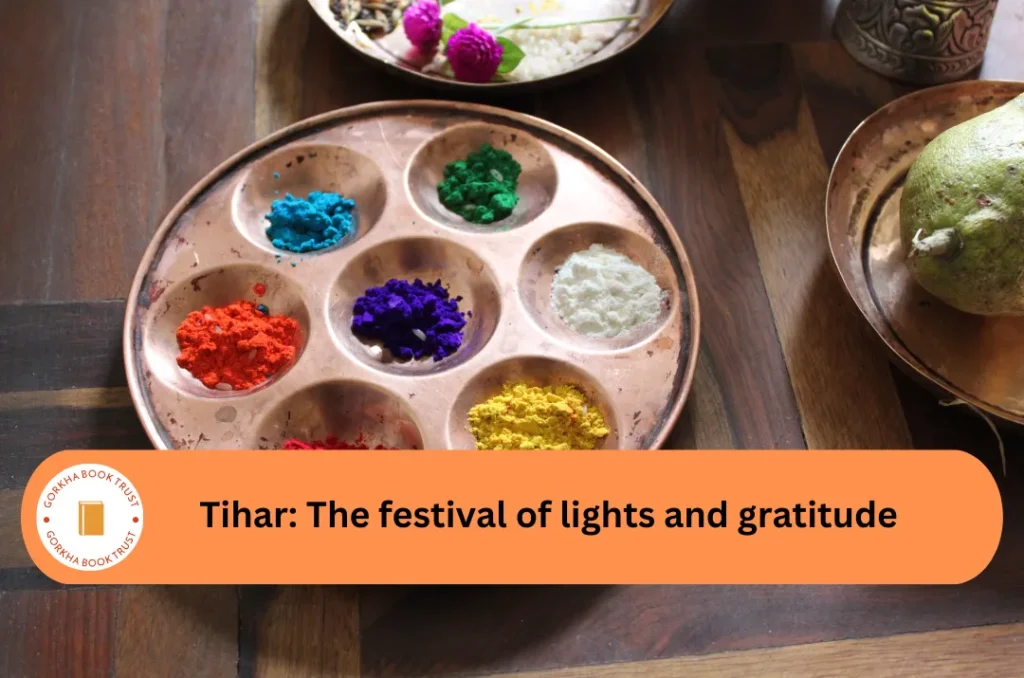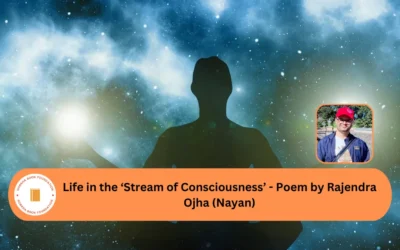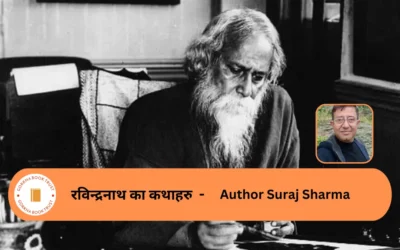Tihar: The festival of lights and gratitude
Tihar, also known as Diwali or Deepawali, is the second-largest festival of the Gorkhas, celebrated over five days typically in the Kartik month. It is known for honoring various animals, deities, and the goddess of wealth, Laxmi. Tihar is often referred to as the festival of lights because of the numerous candles and lanterns lit for Goddess Laxmi. The festival usually falls between mid-October and mid-November as per the Solar calendar.
During Tihar, different animals are worshipped on each of the first four days: crows, dogs, cows, and, depending on one’s cultural background, oxen, Govardhan Mountain, or even oneself. Each day is marked by unique rituals and traditions. The first three days involve the worship of animals and prayers to Lord Yama (the god of death) and Goddess Lakshmi (the goddess of wealth), believed to bring success and luck to people’s lives.
The final day of Tihar celebrates the bond between brothers and sisters through a special ritual. This festival is a significant part of Gorkha culture, emphasizing gratitude towards gods, animals, and the community’s contributions. Every homes are beautifully illuminated with lit diyas, and adorned with colorful flower petal patterns. Tihar’s origin is linked to the story of Yama, the god of death, and his sister Yamuna, with each day of the festival representing a different aspect of their story through distinct rituals.
Day One: Kaag Tihar
Kaag Tihar, the first day of the Tihar Festival, is dedicated to worshipping crows, considered messengers of death. People offer sweets and grains on rooftops or the ground, often on banana leaves, for crows to eat. This act is believed to avert misfortune and protect those who feed the crows from evil. Ravens and crows symbolize grief as messengers of death, and offerings are made to ward off sadness and bring good luck to families. The belief is that if the crows are pleased, they will not bring bad news or misfortune in the coming year. It’s a day to honor these birds, the informants of Yama, the god of death.
Day Two: Kukur Tihar
On the second day of the Tihar Festival, known as Kukur Tihar, dogs are honored for their special role as guardians of the gates of heaven and as loyal companions to humans. People show their gratitude to all dogs, whether pets or strays, by adorning them with marigold garlands and applying a red tika mark on their foreheads as a symbol of purity and devotion. A ritual is performed, followed by a lavish feast that includes milk, meat, dog food, and other canine favorites.
Kukur Tihar is an opportunity to express gratitude to dogs and capture the unique bond between humans and their canine friends. In Hindu mythology, dogs hold significance, with Lord Shiva appearing as Bhairava, a dog used as a vehicle. They also serve as guards of Yama, watching over the gates of the underworld.
Day Three: Gai Tihar and Laxmi Puja
The main day of the Tihar Festival is marked by the worship of cows and the Goddess Lakshmi, who represents wealth. Families come together to prepare delicious feasts, offer rituals to Goddess Lakshmi, and make sweets to share with visitors. Each day of the festival is dedicated to worshipping specific animals.
Cows, considered sacred in Hinduism and symbols of wealth, are adorned with marigold garlands, red tikas on their foreheads, and fed the best grass as a token of gratitude for their contributions to human survival.
In the afternoon, Goddess Lakshmi is worshipped, symbolizing gratitude for the prosperity she has brought in the past year. Houses and temples are adorned with oil lanterns and candles, decorative rangolis are created, and footprints are drawn at doorways to welcome the goddess. At night, people go from house to house performing songs and dances (known as Deusi, bhaili) for small amounts of money.
Day Four: Govardhan Puja
On the fourth day of Tihar, various forms of worship take place depending on cultural backgrounds. One common ritual is Goru Puja, where people honor oxen, which are vital helpers for farmers. Another significant tradition is the worship of cow dung in Govardhan Puja, symbolizing the Govardhan Mountain.
During Goru Puja, elders draw geometric figures, one for blessing the entire family and the other for Yama, the god of death, and his messenger. Afterward, families enjoy a special. Following the banquet, they perform rituals to worship Yama Panchak.
Day Five: Bhai Tika
The final day of Tihar, known as Bhai Tika, is dedicated to celebrating the bond between brothers and sisters. It’s considered the most significant day of the festival, focused on strengthening this special relationship. On Bhai Tika, sisters adorn themselves in clean clothes and prepare tikas and garlands. Brothers also dress in their best attire and buy gifts for their sisters.
During this day, sisters perform a ritual to wish their brothers well-being and protection. The ceremony involves applying a multi-colored tika and presenting garlands to each other. Brothers reciprocate by giving gifts to their sisters as a token of gratitude. This tradition reenacts the story of Lord Yama and his sister Yamuna, emphasizing the love they held for each other.
According to the legend, Yama was unable to meet his sister Yamuna because he was occupied with his duties deciding the fates of souls. Yamuna tried to send messages to him through a crow, a dog, and a cow, but when Yama didn’t respond, she went to meet him on the fifth day of Tihar. Yamuna performed a special ritual for Yama, blessing him with good fortune, which is why this day also explains the worship of crows, dogs, and cows.



